Wildfires & Iconic Architecture: America’s National Treasures in Peril
The 2025 blazes at Yellowstone and Grand Canyon illuminate a stark truth: America’s historic lodges and heritage sites are burning. How do we protect memory and structure in an unforgiving climate?
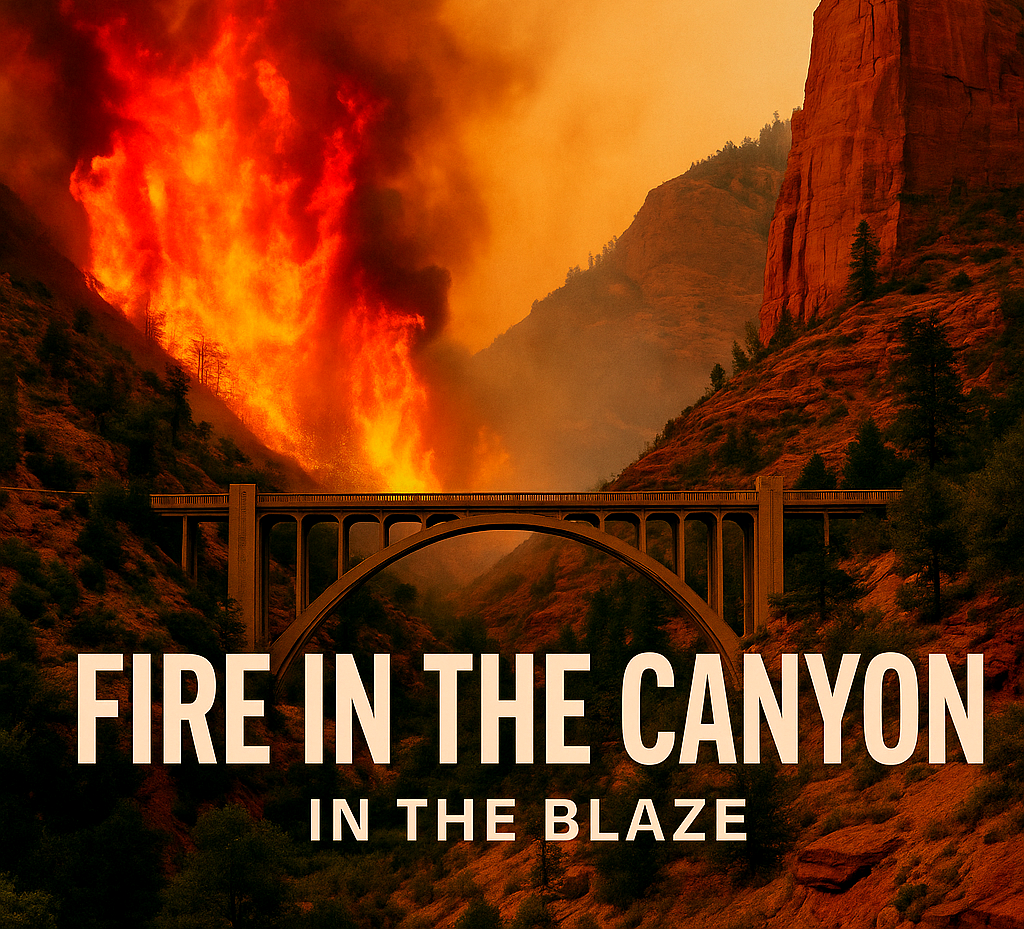
MAMMOTH HOT SPRINGS, July 14, 2025
The 2025 wildfire season has devastated not just forests but also the heart of America’s cultural identity. In the past week, the Dragon Bravo Fire near the North Rim of Grand Canyon National Park destroyed the historic Grand Canyon Lodge and dozens of nearby structures. Meanwhile, Yellowstone’s renowned Roosevelt Lodge, a symbol of the early conservation movement, is left smoldering. These losses highlight how fragile our cultural heritage is and what we risk losing if we do not take climate action.
When Wildfires Target Our Heritage
Wildfires now threaten America’s built heritage like never before. These losses are not random—they represent cultural erasures. The Cannibal Canyon Lodge, a National Historic Landmark built in 1927, embodies early ideas of parkitecture, which combines stone, timber, and location. It's not just a place to stay; it's part of our national identity.
Similarly, the Roosevelt Lodge Historic District, established in 1983, links us to the history of railroad tourism and conservation—a living connection between the past and present.
When fire destroys these sites, entire eras of American identity disappear with them.
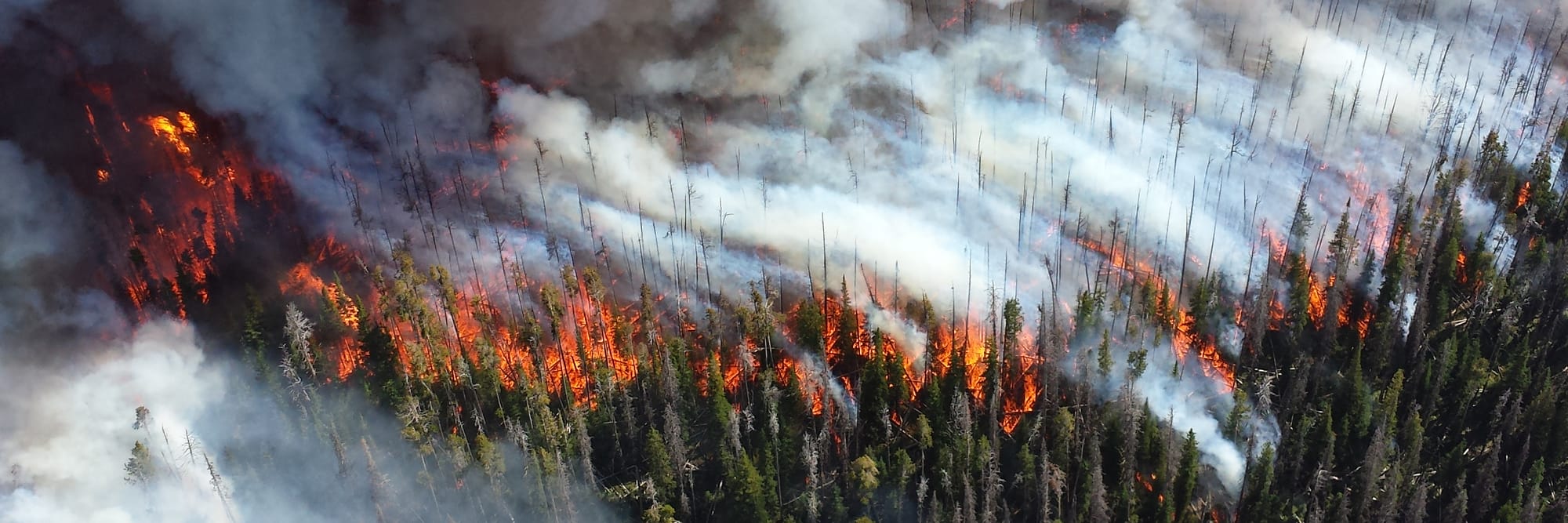
Climate’s Role: More Than Just High Heat
Rising temperatures and unpredictable rainfall are now real issues driving a national fire crisis. Yosemite, Sequoia, Grand Canyon, Yellowstone—all are experiencing this fire crisis caused by drier landscapes, prolonged drought, and unprecedented heat.
Yellowstone alone recorded its first several fires—each about 0.1 acre—in May and June, with the Memorial Day Fire igniting from lightning and moving toward lodge areas. This trend reflects broader conditions: 95% of national parks deal with significant air pollution from smoke and wildfire.
Case Study: Dragon Bravo Fire & Grand Canyon Lodge
- Ignition: Lightning strike on July 4, 2025.
- Destruction: Lodge and 50-80 structures destroyed; water-treatment plant damaged, raising concerns about chlorine gas.
- Park Reaction: North Rim closed for the rest of the season; evacuations were orderly, with no injuries.
- Public Scrutiny: Governor Katie Hobbs has called for an investigation into the decision to treat the lightning strike as a “controlled burn” during extreme weather.
Why it matters: This lodge was the last fully intact rustic complex in the park system. It has been lost during a time when wildfires are less predictable, more intense, and fueled by climate change.
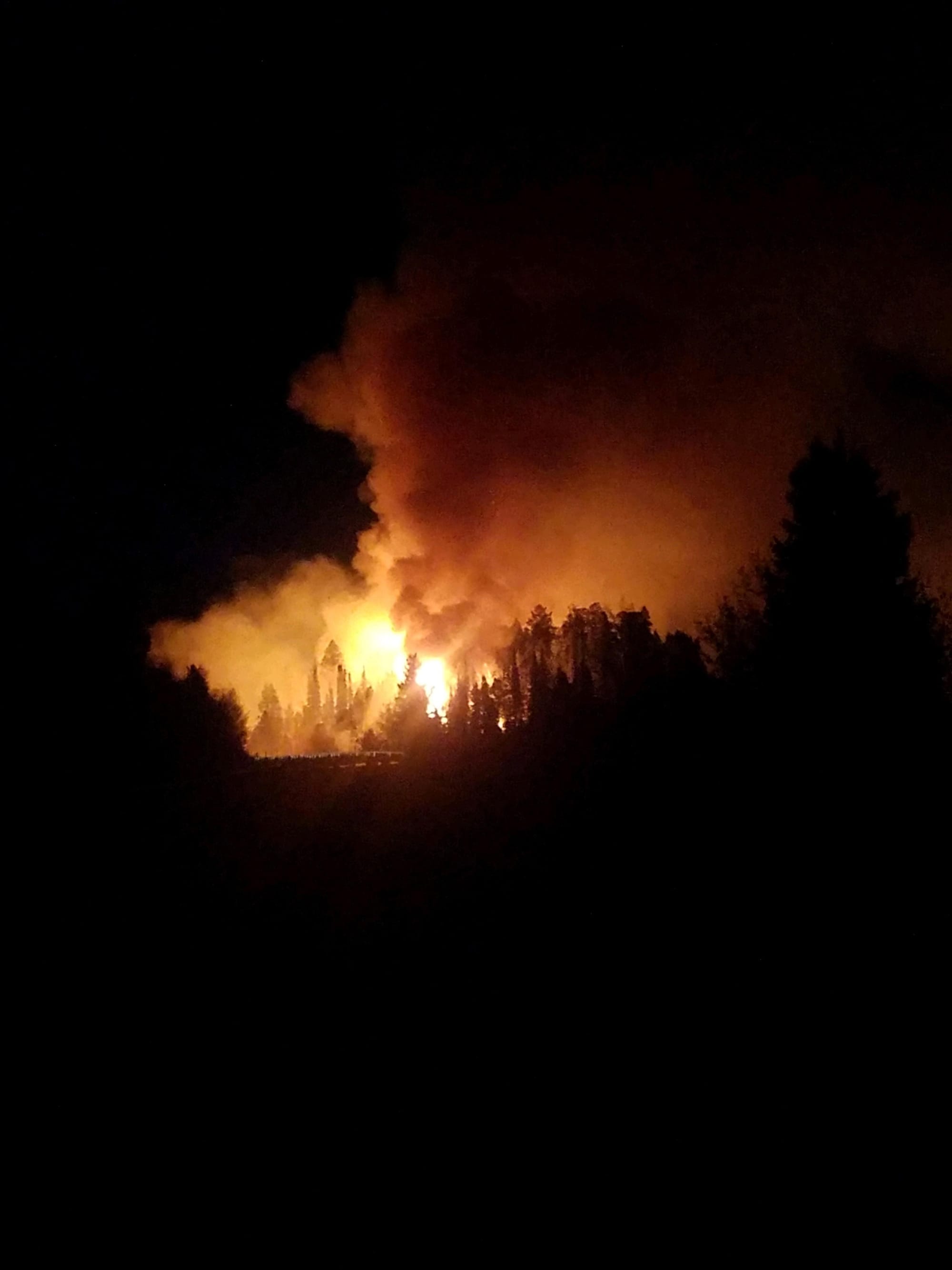
Yellowstone’s Roosevelt Lodge: Cultural & Historical Pillar
Built in the 1920s by the Yellowstone Park Company, Roosevelt Lodge represents the rise of railroad tourism and early conservation storytelling. It offers guests an engaging backstory through “wilderness frontier” experiences.
However, its heavy-log, shake-roof design reflects historical styles rather than wildfire resilience. Experts warn that such designs are not suitable for a future with extreme wildfire behavior. The NPS’s documentation efforts in California’s fire-affected monuments show we must do more than record—we must take action.
Safety Alerts & Visitor Guidance
Yellowstone Travel Advisory (July 14, 2025):
- Closed sectors: North and Northeast loops, including Canyon Village and Tower-Roosevelt access.
- Open sectors: The South Loop via Old Faithful is still accessible, but expect road delays and fire smoke.
Grand Canyon North Rim:
- Fully closed for the season until further notice.
- Suggested alternate stays: South Rim lodges (Bright Angel, El Tovar), Williams AZ, Jacob Lake AZ.
- For updates, visit: NPS Yellowstone | NPS Grand Canyon.
Accommodation tools: Xanterra and other concessionaires are offering refunds and transfer options. Book early due to high demand in the area.
Why Infrastructure Fails Under Fire
Systemic Weaknesses:
- Budget cuts: A GAO study shows only 23% of park infrastructure is “resilient.”
- Fire mitigation underfunded: Prescribed burn programs reduced funding by about 17% over five years, while average fire risk has increased by 30%.
- Emergency delays: Officials labeled the Grand Canyon lightning burn “controlled” despite worsening drought and wind, creating a political issue.
- Legacy architecture is vulnerable: Historic log cabins and wooden roofs cannot withstand heat or embers.
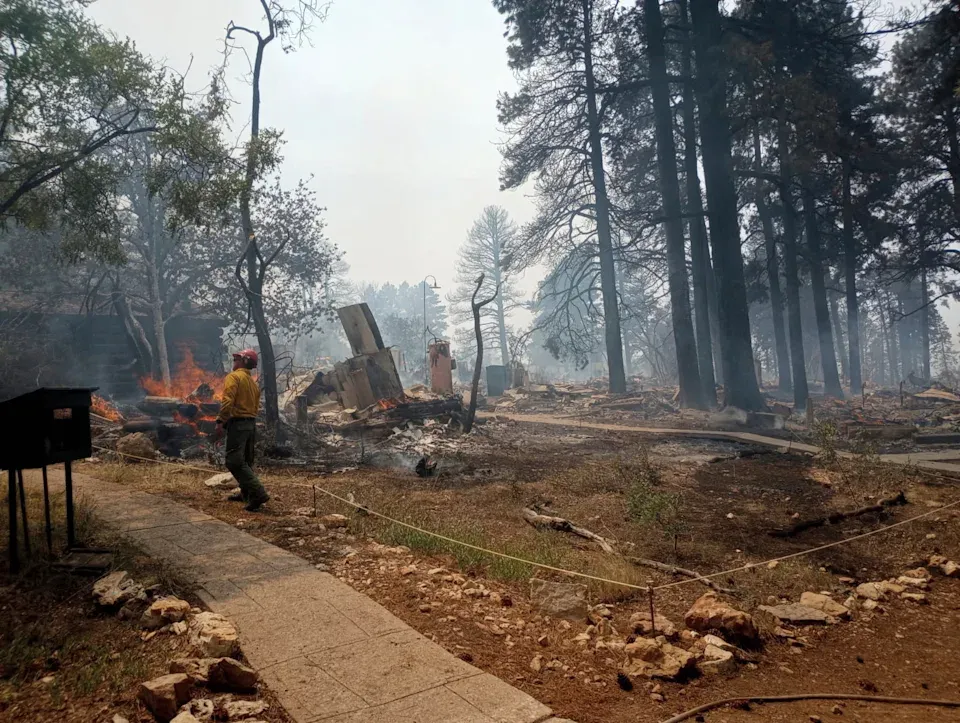
Heritage Versus Resilience: Should We Sacrifice Authenticity?
Preservationists face a dilemma:
- Authenticity: Keeping original wood, design, and materials for historical significance.
- Adaptation: Adding fire-resistant roofing, creating defensible spaces, and using composite materials.
Some argue that rebuilding identically reinforces cultural continuity. Others advocate for “fire-adaptive retrofits,” even if it alters the original look.
A possible compromise? Protective wrapping, successfully used on Yosemite sequoias in 2021, could protect key structures during high-risk periods.
Firefighting & Response: What We Learned (and Didn’t)
In 1988, local farmers helped protect Old Faithful Lodge by using irrigation. This demonstrated community resilience.
During the 2017 Railroad Fire in the Sierra, crews wrapped cabins with protective foil, which could be useful for lodge protection.
However, today, such measures are rare. Bureaucratic views on prescribed burns, combined with low staffing (Yellowstone’s fire team is about 62% of its target), allow fires to spread more easily.
Heritage’s Emotional Toll
National parks are more than attractions—they hold memories. Family vacations, first nights under the stars, and summer hikes are intertwined with lodge porches and communal dining rooms.
When the Canyon Lodge burned in 1960 and Roosevelt Lodge faces loss today, it creates a shared sorrow. These places were cultural touchstones.
Historic writer Louisa Kwan states, “Losing it to fire means losing part of who we are.”
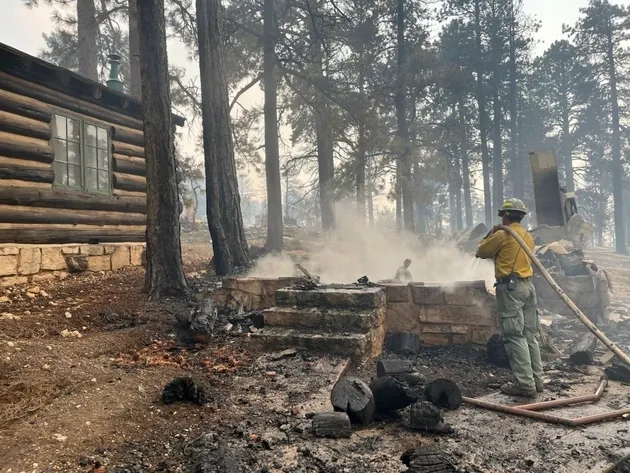
Resilience on the Ground & Nationwide
From Mesa Verde cliff dwellings to Bandelier's Puebloan structures, parks everywhere are facing fire's dual role—destructive and revealing. These communities are learning that preserving culture is part of climate policy.
The American Council on Historic Preservation calls for integrated climate resilience plans for sacred sites and traditional landscapes, urging immediate action.
The National Parks Conservation Association has begun implementing climate-related projects, despite these efforts being underfunded and limited.
Rebuilding Through the Flames
The loss of structures like the Grand Canyon Lodge and damage to Yellowstone’s Roosevelt Lodge are not isolated incidents—they signal a deeper issue. Each fire consumes both timber and memory. Each lost lodge dims an important part of America’s story.
We stand at a turning point: Do we rebuild faithfully, risking future fires? Or do we innovate, incorporate passive fire defenses, advance materials science, and change policy?
There is no simple solution. But one thing is clear: heritage without protection becomes a ghost of the future.
What do you think?
In a warming world, how can we preserve authentic historic structures while ensuring their survival? Should we rebuild ancient lodges exactly as they were, retrofit them for resilience, or relocate them entirely?
Sources
- NPS: Current Yellowstone fires
- NPS: Heritage site wildfire documentation efforts
- PBS: 5 at-risk U.S. historic places (pbs.org)
- National Geographic: Wildfire transformations in national parks
- Time: Climate change is destroying U.S. history (time.com)
- Washington Post: Lessons from trauma fires & prescribed burns
- Wikipedia
- Yellowstone National Park / NPS Fire Management Team
- National Park Service / NPS Photo / AP News




